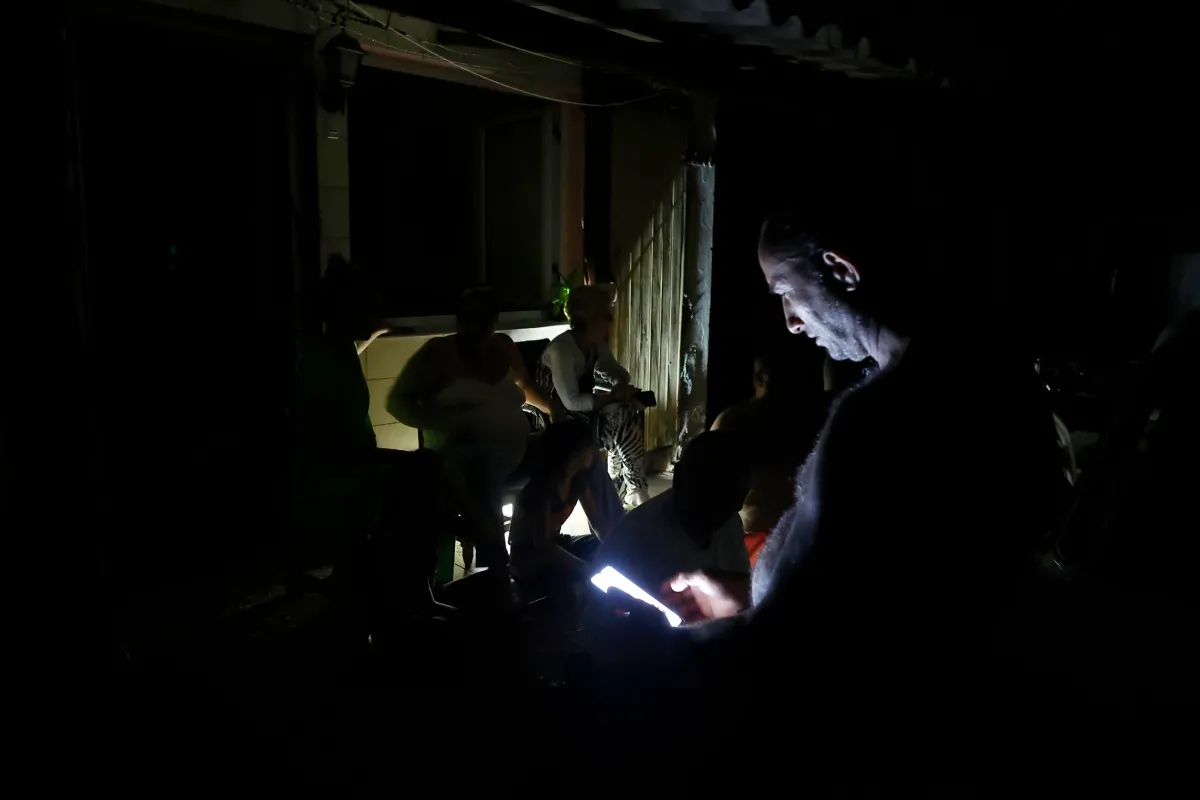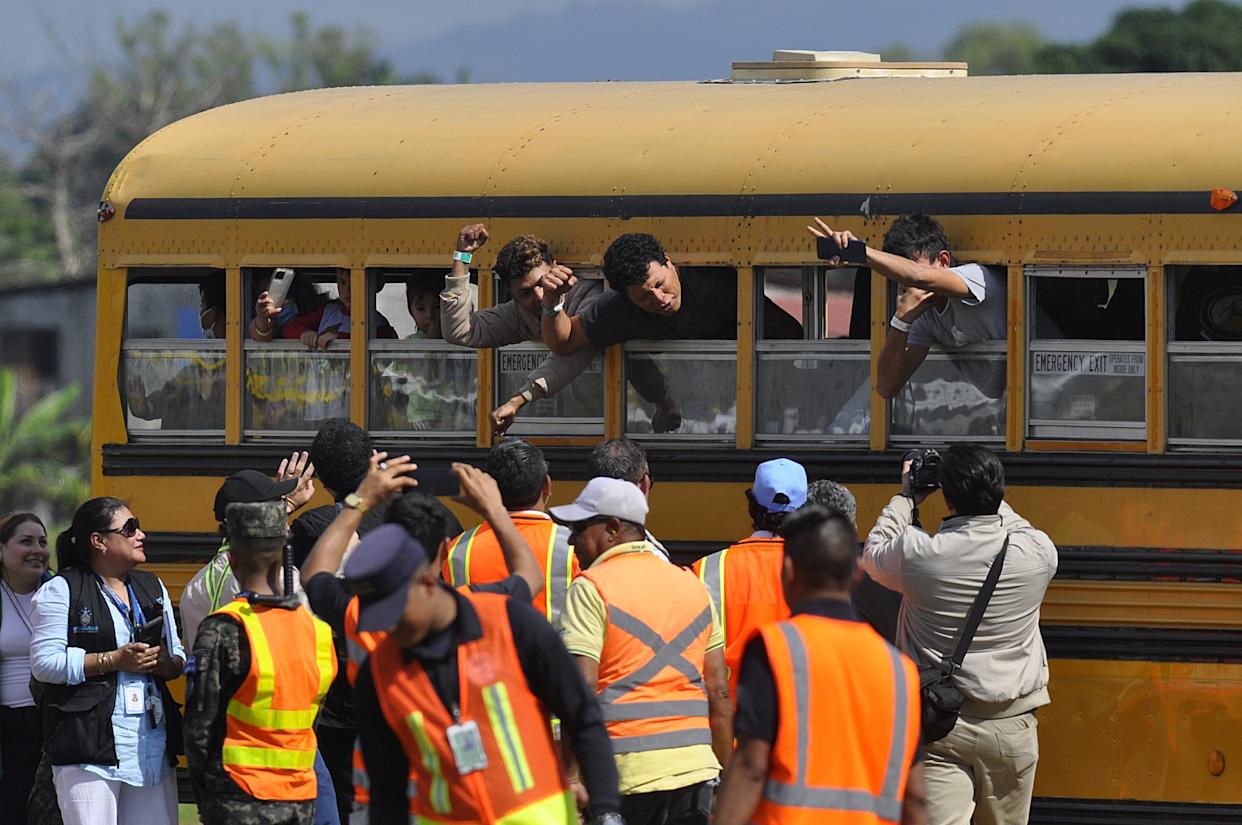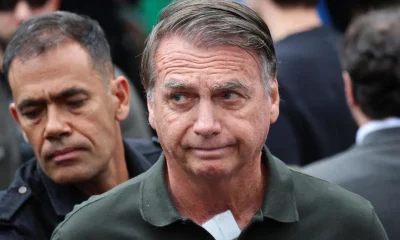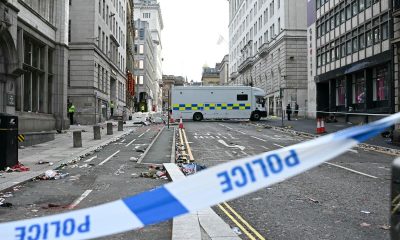International
A third total blackout in Cuba in three days thwarts attempts to recover the service

The third total blackout of Cuba’s National Electric System (SEN) in less than 72 hours has once again frustrated this Sunday attempts to restore a basic service that collapsed three days ago after weeks of exacerbation of an energy crisis that has been brewing for years.
“At this moment, steps are being taken to restore the connection,” Félix Estrada, director of the national cargo office of the company Unión Eléctrica, told state television.
The manager of the state company explained that a strategy is currently being followed to reorganize the country’s electricity generating units by regions and then carry out their start-up.
He said that the objective is to restore the SEN connection in the shortest possible time to gradually restore the service of the approximately ten million inhabitants of the island.
Cause of the third blackout in Cuba
He recalled that the cause of this third blackout occurred due to a “transmission failure” when it had been possible to connect in the same subsystem to Mariel (west) and Holguín (east), separated by more than 600 kilometers.
The first total fall of the system that left the country in “zero national energy coverage” was recorded last Friday, after an “unforeseen” exit from operations of the Guiteras thermoelectric plant, considered key to the stability of the SEN.
This Saturday, the actions carried out to re-energize and recover the SEN failed again, which caused the second total disconnection, and in the last hours of that day the subsystem that had been created in the western half of the island collapsed, so the work had to start again.
The Minister of Energy and Mines, Vicente de la O Levy, acknowledged this Sunday in an appearance that the situation in the electricity system is “very tense.”
Precarious state
But he said that the Government aspires for the SEN to recover within two days the state it had before the first massive blackout and that consequently most consumers will have light again “tomorrow Monday” and that “the last customer may perhaps be receiving (current) next Tuesday.”
The SEN is in a very precarious state due to the shortage of fuel – the result of the lack of foreign exchange to import it – and the frequent breakdowns in obsolete thermoelectric plants, with four decades of operation and chronic lack of investments.
Stocks have been common for years but the situation has worsened in recent weeks. In recent days, days have been recorded with maximum affectation rates of more than 50%, that is, moments when half of the country was simultaneously without electricity.
Affected economy
The frequent blackouts damage the Cuban economy – which in 2023 contracted by 1.9% and boost social discontent in a society affected by an aggravated economic crisis in recent years.
They have also been the trigger for anti-government protests, including those of July 11, 2021 – the largest in decades – those in Nuevitas and Havana in August and September 2022, and those of last March 17 in Santiago de Cuba (east) and other locations.
The last time a similar situation of “zero production” occurred was in September 2022, after the passage of Hurricane Ian with category three through the extreme east of the island. This caused a serious mismatch and the recovery took days.
International
Meta Says Russia Seeks to Ban WhatsApp for Defending Secure Communication

U.S. tech giant Meta, the parent company of WhatsApp, said that Russia is seeking to ban the messaging app because it “challenges government attempts to violate people’s right to secure communication.”
Russian authorities have encouraged citizens to switch to state-backed applications, and in August they already blocked WhatsApp’s calling feature.
On Friday, the communications regulator Roskomnadzor claimed that the platform was being used to “organize and carry out terrorist acts in the country, recruit perpetrators, and facilitate fraud and other crimes.”
“If the messaging service does not comply with Russian law, it will be completely blocked,” the regulator warned.
WhatsApp remains one of Russia’s most widely used messaging services, alongside Telegram.
Moscow is pressuring both platforms to grant authorities access to user data upon request for investigations into fraud and activities the government labels as “terrorist.”
Human rights advocates fear the demand could be used to target critics of the Kremlin, President Vladimir Putin, or the war in Ukraine.
International
Archbishop Wenski criticizes Trump’s deportation policies, calls for stronger push for reform

The Archbishop of Miami, Thomas Wenski, has called for increased pressure on the U.S. Congress to advance comprehensive immigration reform and criticized President Donald Trump’s mass deportation policies, arguing that they “do nothing to help.”
“We need to apply more pressure on Congress so lawmakers can make the necessary changes. It is also important for the Administration to listen to our voice. We do not want to be anyone’s enemy—we are Americans,” Wenski said in an interview with EFE.
The religious leader, who heads one of the dioceses with the largest Latino and Haitian populations in the United States, issued a call to defend the rights of migrants. He also emphasized that the U.S. Conference of Catholic Bishops (USCCB) has maintained a strong and public stance in favor of migrants for decades.
International
Trump relaunches diplomatic push to finalize U.S.-Backed peace plan for Ukraine War

U.S. President Donald Trump announced on Tuesday that his diplomatic team will resume meetings with delegations from Russia and Ukraine in an effort to pressure both sides to accept the peace plan proposed by Washington to end the war in Ukraine.
As part of this new round of talks, U.S. Special Envoy Steve Witkoff will travel to Moscow to meet with Russian President Vladimir Putin. Meanwhile, Army Secretary Dan Driscoll will hold discussions with Ukrainian representatives to narrow differences on the remaining points of the agreement.
Trump also confirmed his intention to meet personally with Ukrainian President Volodymyr Zelensky and with Putin, though he emphasized that such meetings will only take place “when the agreement is fully finalized or in its final stage.”
The president claimed that his administration has made “tremendous progress” toward resolving the conflict and reiterated that the war “never would have started” if he had been in the White House at the onset of the crisis.
The U.S.-backed peace plan consists of 28 points and has been revised following feedback from both sides. According to Trump, only “a few points of disagreement” remain under active discussion.
One of the most controversial aspects of the proposal is the suggestion that Ukraine cede parts of the Donbas region to Russia and limit the size of its armed forces. Kyiv is working closely with Washington to soften these clauses in search of an arrangement that does not compromise its sovereignty or security.
With this diplomatic push, Trump aims to solidify his role as the main mediator in the conflict and steer the war toward a political resolution after years of devastation, humanitarian crisis, and rising global geopolitical tensions.
-

 International5 days ago
International5 days agoTrump relaunches diplomatic push to finalize U.S.-Backed peace plan for Ukraine War
-

 Central America1 day ago
Central America1 day agoTrump Pardons Former Honduran President Hernández and Warns of Aid Cuts Ahead of Election
-

 International5 days ago
International5 days agoBolsonaro misses appeal deadline, faces imminent prison order by Brazil’s Supreme Court
-

 Central America3 days ago
Central America3 days agoPanama reinforces security with new helicopters and Super Tucano Aircraft purchases
-

 International5 days ago
International5 days agoMan pleads not guilty in Liverpool parade incident that injured more than 130
-

 International5 days ago
International5 days agoMacron to announce new voluntary military service amid rising security concerns in Europe
-

 Central America3 days ago
Central America3 days agoTrump urges hondurans to back conservative candidate Nasry Asfura in november elections
-

 International3 days ago
International3 days agoArchbishop Wenski criticizes Trump’s deportation policies, calls for stronger push for reform
-

 Central America3 days ago
Central America3 days agoWashington calls for oversight as Honduras faces allegations of electoral interference
-

 Central America11 hours ago
Central America11 hours agoHonduras’ China–Taiwan Future Hinges on Sunday’s Presidential Election
-

 International1 day ago
International1 day agoMeta Says Russia Seeks to Ban WhatsApp for Defending Secure Communication






























